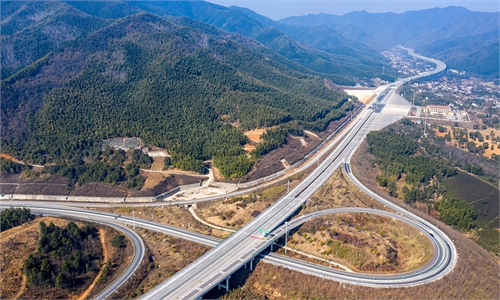China cuts composite import tariff to 15.8%, lowest in history, may slash further to around 7% by 2035

A customer buys Christmas trees at Yiwu International Trade City, East China's Zhejiang Province on December 11. Photo: Yang Hui/GT
China cut its composite tariff rate for imported goods by about 27.5 percent in the five years ended in 2020, customs data showed, and experts predicted that the country would likely halve the current rates by the end of 2035 amid its measures to further open up to the world.
The composite import tariff rate dropped to 15.8 percent, a record low, from 21.8 percent in the five years ending 2020.
Such measures generated huge economic benefits for China as well, with revenue from tariffs and import-related taxes surging 8.7 percent to 8.99 trillion yuan ($1.39 trillion) from 2016 to 2020, noted the customs.
Tian Yun, vice director of the Beijing Economic Operation Association, said that China is methodically fulfilling the promises it made when it joined the WTO, but there's still plenty of room to further cut tariffs, particularly after the launch of a free port in South China's Hainan Province, where commodities will be traded duty-free.
"I expect that China will cut import tariffs to single-digit levels, maybe 7 percent, by the end of 2035 as the country strives to reach a higher-level opening-up target," he told the Global Times.
According to Tian, as long as global trade maintains healthy competition and there is no deliberate obstruction, like the US-initiated tariff war, China will further cut import tariffs.
Besides tariff cuts, China is also taking other measures to promote opening-up. For example, it is stepping up efforts related to the Regional Comprehensive Economic Partnership (RCEP) trade pact, with measures such as establishing a management system for the origin of goods as well as informing companies about tariff concessions and relevant policies under the RCEP framework, the customs noted.
"This shows that China will never be the 'short slab' of pushing the RCEP," Tian said.
According to Chinese customs, China will issue a guideline to make clear the provisions on products covered by RCEP preferential regulations, such as transportation rules and verification of the origin of exports.
China will also strengthen policy promotion and training to help enterprises better understand the tariff concessions and preferential rules under the RCEP, so that they can fully benefit, according to the customs.
According to Tian, companies in certain parts of China, like Beijing's Haidian district, are already taking such lessons. "It won't be hard for Chinese companies to get familiar with technical matters under the RCEP ... one year at most," he said.
But Tian said implementation of the agreement still faces uncertainties as some countries' legislatures might reject the deal, while the Biden administration in the US may intervene against the agreement.
China and 14 other countries in the Asia-Pacific region, including Japan and Australia, signed the agreement in late 2020 to form the world's largest trading bloc.


